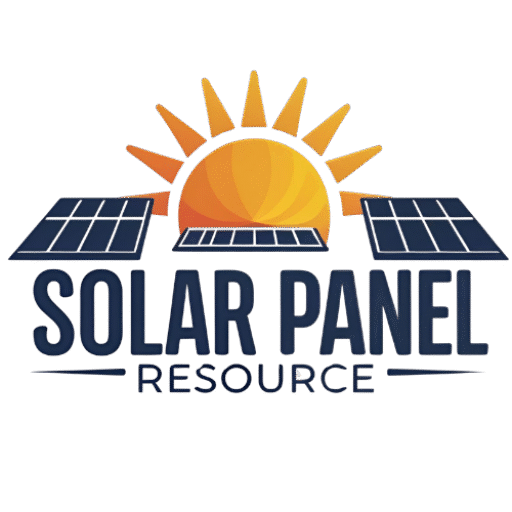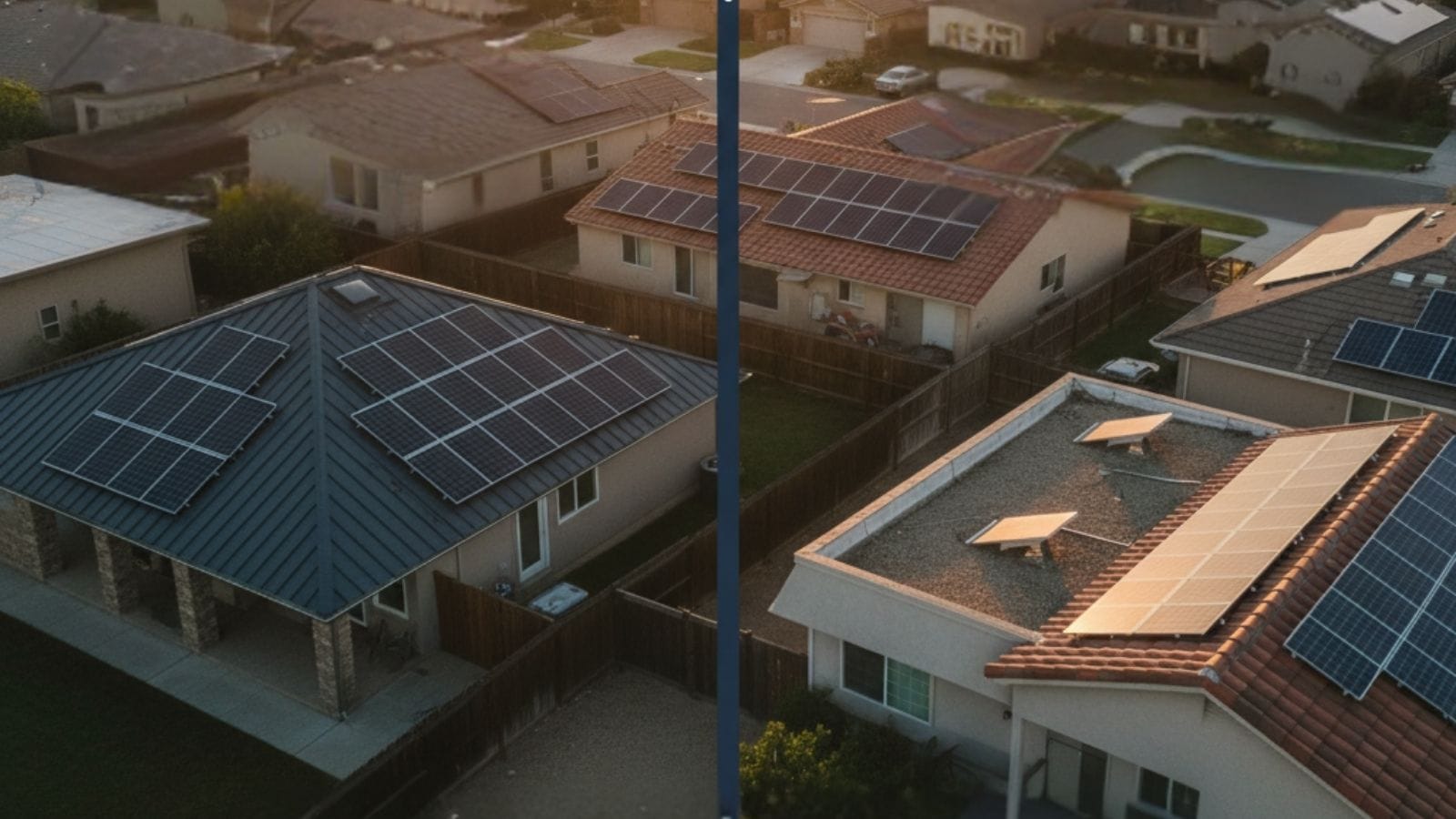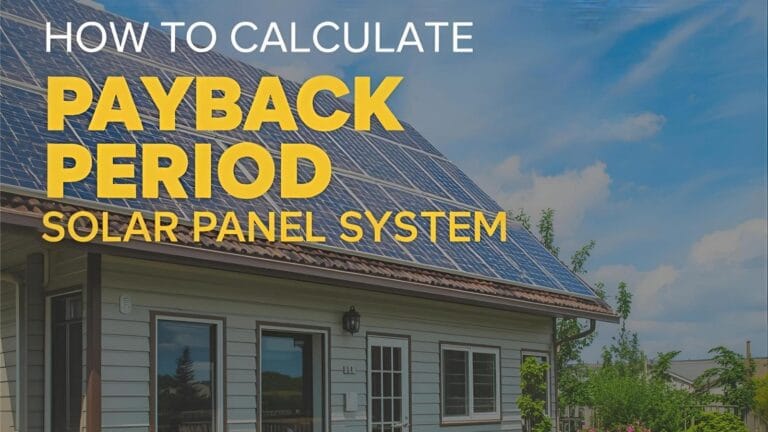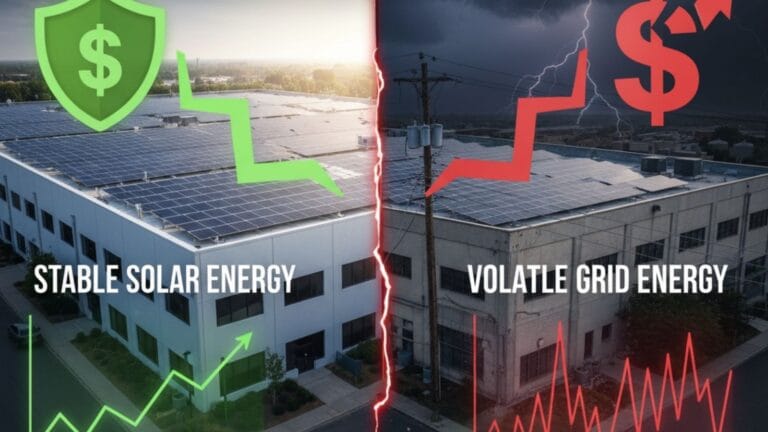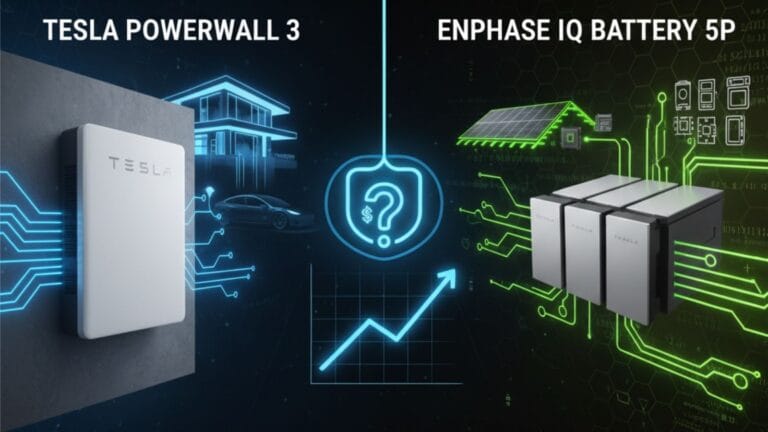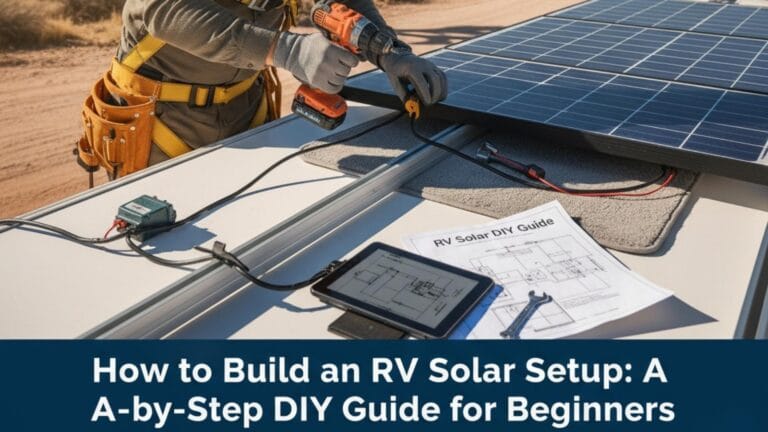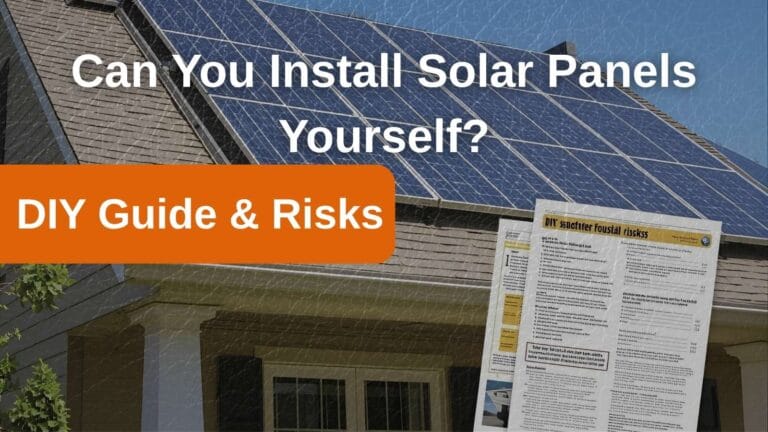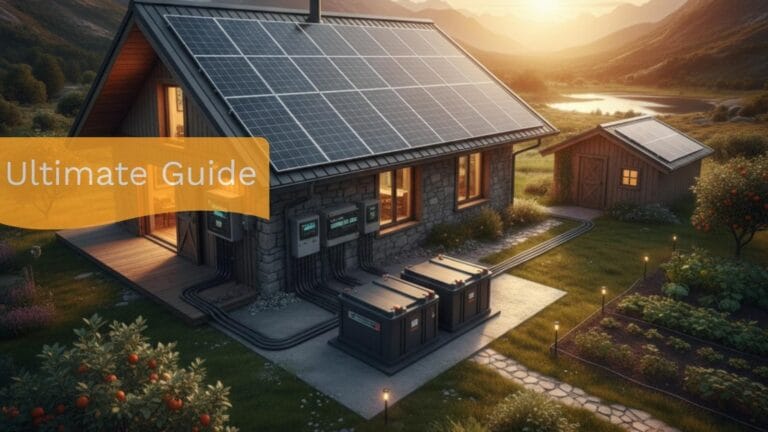Best Roof Types for Solar Panels: What You Must Know
When going solar, one of the most important decisions is how your home’s roof can support the system. While many people focus on cost and panel efficiency, the compatibility of your roof is a pivotal factor in the project’s success. This guide analyzes the most common roofing materials—from asphalt shingles and metal to tile and flat roofs—breaking down the pros, cons, and installation factors you need to consider for each.
Key Factors That Define the “Best” Roof (Beyond Material)
Before even comparing materials like asphalt or metal, your roof’s current condition and physical properties must be assessed. These foundational factors determine the cost, complexity, and even the possibility of an installation.
1-Roof Integrity and Age
Your roof’s condition is the first thing that must be checked. This includes looking for signs of wear, warping, or water leakage. Most solar panels have a 25- to 30-year warranty, so experts recommend that your roof have at least 10–15 years of life remaining before a solar installation.
The Cost of Waiting (Why You Must Replace an Old Roof First)
Replacing your roof after your solar system is installed can be a major expense. You would have to pay a professional team to safely remove, store, and then re-install the panels. This process alone can cost anywhere from $2,000 to over $6,000, depending on the system’s size. Replacing an old roof before going solar is crucial to avoid this unnecessary cost.
2-Tilt, Orientation, and Sun Exposure
The angle and direction of your roof are critical to maximizing energy yield. For most of the U.S., a south-facing roof with a 30-40° tilt receives the most sunlight. An ideal roof also has a large, clear, and uninterrupted surface. Shading from trees, chimneys, or other buildings can drastically reduce a panel’s output, and a professional shading analysis is a critical step in system design.
3-Load-Bearing Capacity
Finally, a roof’s structure must be able to support the additional weight from panels and mounting hardware, especially when combined with snow or high winds. A structural analysis is required to ensure the roof can safely handle the new load. If it can’t, expensive reinforcement may be required.
Video: How Roof Slope and Placement Affect Cost
Asphalt Shingles: The Most Common and Cost-Effective
Asphalt shingles are the most common roofing material in North America and an excellent choice for solar panel installation. Their widespread use means most installers have extensive experience with them, and their material properties make for a straightforward and cost-effective installation process.
Why Asphalt Shingles Are a Great Choice
- Easy Installation: Asphalt shingles are a solid, flat surface that makes it easy to install solar panels. Installers can use a simple bolt-and-flashing system to secure the mounting hardware directly to your roof’s rafters. This process is well-understood, and most solar mounting companies have a specific product line designed for asphalt shingles.
- Widespread Installer Familiarity: Because asphalt shingles are so common, virtually every solar installer is a pro at working with them. This familiarity translates to a smoother, faster, and more efficient installation, which can help keep your labor costs down.
The Long-Term Consideration
The main challenge with an asphalt shingle roof is its lifespan. While solar panels are designed to last for 25 to 30 years, an asphalt shingle roof typically needs to be replaced after 20–25 years. If your roof is already a decade or more old, an installer will likely recommend replacing it before the solar installation. This is a crucial, long-term consideration because it’s much more affordable to replace the roof once than to pay for the solar system to be professionally removed, stored, and reinstalled just a few years after the initial installation.
Metal Roofs: Long Lifespan and Mounting Flexibility
Metal roofs, particularly standing seam metal roofs, are widely considered one of the best surfaces for solar panel installation. Their durability and unique design allow for a non-penetrating mounting system that preserves the roof’s integrity and extends the life of your solar system.
The Unmatched Advantages of Metal Roofs
- Non-Penetrating Mounting: This is the single biggest advantage of a standing seam metal roof. Instead of drilling dozens of holes into your roof, installers can use specialized clamps that attach directly to the raised seams. This method is faster, eliminates the risk of leaks, and protects the roof’s warranty.
- Exceptional Durability and Lifespan: A metal roof can last for 40 to 70 years, which perfectly aligns with and often exceeds the 25- to 30-year lifespan of a solar system. This means you won’t have to worry about the costly process of removing and reinstalling your panels just to replace a worn-out roof.
- Aesthetic and Performance Benefits: Modern metal roofs come in a variety of colors and styles, and many have a reflective surface that can help reduce a home’s cooling load in the summer. While this reflectivity was once thought to reduce a panel’s output, studies have shown that the effect is minimal and the long-term benefits of a durable, leak-proof roof far outweigh any small, potential losses.
Even corrugated metal roofs, which require some drilling, are an excellent choice because they are highly durable and can support solar panels with minimal risk. The core benefit of metal roofs is their superior lifespan and structural integrity, making them the ideal long-term foundation for a solar system.
The Primary Disadvantage: Higher Initial Cost
The main trade-off for these significant advantages is a higher upfront cost. Metal roofing materials are more expensive than asphalt shingles, and the installation can sometimes require more specialized labor. This initial expense is the primary factor homeowners must weigh against the long-term benefits of durability and a 40–70 year lifespan.
Tile Roofs: Aesthetic Appeal with Installation Challenges
Clay and concrete tile roofs, popular in warm climates for their durability and thermal mass, present a unique set of challenges for solar installation. While not impossible, installing on these roofs requires specialized techniques and hardware that directly impact the project’s cost, time, and complexity.
1. The Challenges: Fragility and Customization
The biggest hurdle with tile roofs is their fragility. Unlike shingles, which are flexible, clay and concrete tiles are brittle and can easily crack under a worker’s weight or during the drilling process. To mitigate this, professionals use a meticulous installation process that includes:
- Careful Tile Removal: Installers must carefully remove tiles at each mounting point to access the roof decking and rafters below.
- Specialized Mounting Hardware: Standard flashing won’t work. Instead, installers use custom tile hooks or tile replacements that are designed to fit the specific shape of the tiles. These mounts are fastened directly to the rafters, ensuring the panels are securely anchored.
This careful, step-by-step process requires significantly more labor and time compared to installing on a standard asphalt shingle roof, which directly translates to a higher installation cost, often 10-20% more.
2. The Smart Solution: The “Comp-Out” Method
To balance a homeowner’s desire for solar with the challenges of a tile roof, many professionals recommend a “comp-out” or “tile replacement” method. This involves removing the tiles in the exact area where the solar array will be installed and replacing them with a patch of durable composite shingles and flashing.
This method offers several key advantages:
- Reduced Risk: It eliminates the risk of breaking expensive tiles during installation or in the future from vibrations.
- Simplified Installation: It allows installers to use standard, less expensive mounting hardware designed for asphalt shingles, which simplifies the process.
- Improved Longevity: A properly installed composite shingle patch will provide a durable, watertight seal for the lifespan of the solar system, protecting your home from leaks.
Flat Roofs: Best for Flexible, Non-Penetrating Systems
Flat roofs, common in commercial and multi-family residential buildings, offer unique advantages for solar panel installation. While they may not have a natural pitch, their large, uninterrupted surface area provides significant flexibility for system design and layout.
The Benefits: Simple Design and Flexible Mounting
One of the biggest advantages of a flat roof is the simplicity of the layout. Unlike a sloped, multi-faceted residential roof, a flat roof allows for a clean, uniform array with minimal interruptions from chimneys or vents. The entire surface can be used for solar panels.
- Ballasted Mounting Systems: This is a major benefit for flat roofs. Instead of drilling into the roof to secure the panels, installers can use a ballasted mounting system. This system uses a framework and weights (typically concrete blocks) to hold the panels in place at the optimal angle. This method significantly reduces the risk of leaks and preserves the roof’s integrity.
- Optimal Angle: Since the roof is flat, installers can use a tilt racking system to angle the panels to the most optimal tilt (around 30–40 degrees) for your location, maximizing energy output throughout the year.
Key Considerations for a Safe Installation
While installation on a flat roof is straightforward, it requires a careful engineering assessment to mitigate potential risks.
Drainage: Finally, installers must ensure the solar array does not impede the roof’s drainage. An improperly designed system can lead to standing water, which can cause roof damage and mold.
Load-Bearing Strength: The weight of the solar panels and the ballasted system adds a significant load to the roof. A professional engineer must assess the roof’s structural integrity to ensure it can safely support this added weight, especially with the additional forces from snow and wind.
Wind Uplift Risks: Flat roofs are particularly susceptible to wind uplift, which can literally lift a solar array off the roof. A professional will perform a wind load analysis to determine the correct amount of ballast needed to secure the system against high winds.
Wood Shakes: Aesthetic but Risk-Prone
Wood shake roofs, while aesthetically pleasing, are generally considered unsuitable for solar panel installation. The unique properties of this material—its flammability, uneven surface, and fragility—create significant challenges for installers and homeowners alike, often making a full roof replacement the most viable option.
The Unsuitability of Wood Shake Roofs
The primary concern with wood shake roofs is flammability. In many fire-prone regions, local fire codes may prohibit or heavily restrict solar installations on wood shake roofs unless the wood has been treated with a fire-resistant coating. Even with treatment, the risk of fire remains, and many solar companies simply refuse to install on them for liability reasons.
Beyond the fire risk, wood shake roofs present several other major challenges:
- Moisture Retention and Rot: The gaps between the shakes can trap moisture, which can lead to rot and mold. Installing solar panels on top of the shakes can exacerbate this issue by preventing proper air circulation and moisture evaporation.
- Fragility and Unevenness: The uneven surface of wood shakes makes it difficult to install standard racking systems. The material itself is also fragile and can easily crack or split during installation, leading to potential leaks.
The Costly but Necessary Solution
In most cases, a professional installer will strongly recommend a complete roof replacement before proceeding with a solar installation. While this adds a significant upfront cost to your project, it is the only way to ensure the long-term safety and reliability of your solar system. A new, fire-resistant roof… …protecting your home and ensuring the system’s structural integrity for decades to come.

So, What Is the Best Roof for Solar?
As this guide has shown, there is no single “best” roof for solar panels. The ideal choice is a combination of foundational factors and the right material. First, your roof must be in good condition, structurally sound, and have at least 10-15 years of life remaining. The orientation and tilt must also allow for maximum sun exposure.
For materials, standing seam metal roofs offer the best long-term durability and allow for a non-penetrating installation. Asphalt shingles are the most common and cost-effective choice, but their shorter lifespan is a key trade-off. Tile and flat roofs are also viable but require specialized (and often more expensive) hardware, such as “comp-out” methods or ballasted racking systems.
Ultimately, the “best” roof is one that is structurally prepared for the system’s weight and provides a stable, leak-free foundation that will last as long as the solar panels themselves.
The roof’s structure and material choice can significantly alter the payback period of a solar system, as explained in our solar payback calculation guide.
Reference: National Roofing Contractors Association (NRCA) guidelines

Solar Energy Enthusiast & Renewable Energy Researcher
Vural’s journey into solar energy began four years ago, driven by frequent power outages and high electricity bills at his own home. He has since gained hands-on experience with both personal and commercial solar projects. At solarpanelresource.com, Vural shares his real-world insights and in-depth research to guide homeowners and business owners on their own path to energy independence.
